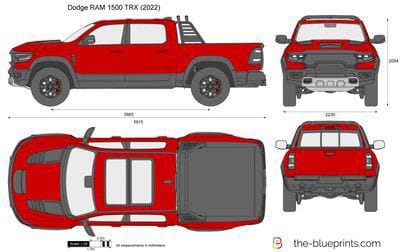In the world of electronics and engineering, schematic drawings play an integral role in the design, development, and troubleshooting of various devices. One such component that often requires detailed schematics is the Mollar CGT20750. If you’re an engineer, technician, or hobbyist working with this particular device, understanding its schematic drawing is vital. This article delves into the Mollar CGT20750 schematic drawing, its importance, and how you can make sense of it for both professional and DIY projects.
Introduction to Mollar CGT20750
The Mollar CGT20750 is a specialized electronic component or module that is used in various applications, particularly in the fields of industrial machinery, automotive electronics, and communications technology. As with most electronic devices, understanding how to read and interpret the schematic drawing for such a component is crucial. A schematic drawing represents the functional layout of the component, showing how the individual parts are connected and interact with each other.
Schematic drawings are used by engineers and technicians to understand the flow of electricity and signals within a device. When it comes to the Mollar CGT20750, these diagrams allow users to troubleshoot, repair, and upgrade the device by clearly illustrating all the interconnections and their respective roles.
Why Schematic Drawings Matter
Before we dive into the specifics of the Mollar CGT20750 schematic drawing, it’s essential to understand why schematic diagrams are so crucial in electronics. At a high level, schematic diagrams:
Provide a visual representation of a circuit: Instead of dealing with complex wiring or a large number of components in a physical space, schematics give an easy-to-understand map of how everything fits together.
Allow for troubleshooting and repair: When a device fails or starts malfunctioning, the schematic can help technicians quickly identify the mollar cgt20750 skematik drawing issue, whether it’s a broken connection, faulty component, or an issue with the circuit layout.
Aid in component replacement or upgrades: Knowing how different components in a circuit interact allows users to swap out faulty parts or even improve the device by adding new components.
Offer design assistance: When engineers are designing new systems or building prototypes, schematic drawings can assist in laying out an efficient and functional circuit from the start.
The Structure of the Mollar CGT20750 Schematic Drawing
To understand how to read the Mollar CGT20750 schematic drawing, it’s necessary to know what to expect in a typical schematic diagram for such a component. While there can be variations depending on the device’s functionality, most schematic drawings follow a few key guidelines.
The Mollar CGT20750 schematic drawing will generally include:
Component Symbols: These represent the different electronic parts (e.g., resistors, capacitors, transistors, and microchips). Each component is represented mollar cgt20750 skematik drawing by a standardized symbol. For instance, a resistor might look like a zig-zag line, while a capacitor could be represented as two parallel lines.
Connections and Wires: Lines connecting symbols indicate the flow of electricity or signals. These lines represent the wires or traces on a circuit board. The drawing will show how each component is interconnected.

Power Sources and Grounding: A schematic will highlight where power is supplied to the circuit and where grounding occurs. This is especially important in ensuring the correct operation of the circuit, as improper grounding or power supply can lead to failure.
Input/Output Points: These show where the device interacts with the external environment, such as input signals (e.g., from sensors or switches) and output signals (e.g., to motors or other connected systems).
Labels and Values: Each mollar cgt20750 skematik drawing component on a schematic is often labeled with values (e.g., resistance in ohms, capacitance in farads). These values help to determine the functional performance of the circuit.
How to Read the Mollar CGT20750 Schematic Drawing
Reading a schematic drawing can initially seem overwhelming, but once you break it down into smaller steps, it becomes more manageable. Here’s how you can approach the Mollar CGT20750 schematic drawing:
Common Issues with the Mollar CGT20750 Schematic
While the Mollar CGT20750 is a robust and reliable component, as with any complex system, there can be issues that arise during its operation. Understanding the schematic drawing can help you identify and address these problems.
Tools for Viewing and Editing Schematic Drawings
If you need to work with the Mollar CGT20750 schematic drawing, having the right tools can make the process easier. Several software applications are designed specifically for viewing, editing, and creating schematic diagrams.
AutoCAD Electrical: A popular tool for creating and editing schematic drawings, particularly for industrial applications.

KiCad: An open-source software that mollar cgt20750 skematik drawing allows you to design and view schematics for electronic devices, including the Mollar CGT20750.
Altium Designer: A professional-grade software tool that’s widely used for designing electronic circuits and schematic diagrams.
Fritzing: A user-friendly option for hobbyists and beginners looking to create and understand schematic drawings.
These tools allow users to import, export, and modify schematic diagrams, making them ideal for both professionals and DIY enthusiasts.
Conclusion
The Mollar CGT20750 schematic drawing is a critical tool for anyone working with this electronic component. By understanding its structure and how to interpret it, engineers, technicians, and hobbyists can troubleshoot, design, and mollar cgt20750 skematik drawing optimize their systems. Schematic diagrams not only help in repairing or upgrading devices but also provide insight into how a device functions at the most fundamental level.
For those working with the Mollar CGT20750, mastering schematic reading skills is an invaluable asset that ensures accurate diagnostics and the efficient operation of electronic systems. Whether you’re troubleshooting an issue, designing a new circuit, or replacing faulty components, understanding how to work with the schematic drawing is key to ensuring success in any project involving this device.
mollar cgt20750 skematik drawingAlso read this; to-know-about-puwipghooz8-9-edge
FAQs About the Mollar CGT20750 Schematic Drawing
- What is the Mollar CGT20750?
The Mollar CGT20750 is an electronic module or component used in various systems for controlling or processing electrical signals. It can be used in automotive electronics, industrial machines, and more. The schematic drawing of this component is essential for understanding how it operates.
- How can I get a schematic drawing for the Mollar CGT20750?
You can typically obtain a schematic drawing from the manufacturer’s website, product manuals, or electronic design resources. Many websites also host user-contributed schematics for various components.
- Why is it important to understand the schematic?
Understanding the schematic allows you to troubleshoot, design, and modify systems using the Mollar CGT20750. It is crucial for diagnosing problems, repairing components, and making informed decisions about component upgrades or replacements.
- Can I modify the Mollar CGT20750’s schematic?
Yes, depending on the design, you may modify the schematic for your particular needs. However, any modifications should be done carefully to avoid damaging the component or disrupting its functionality.
- What software can I use to view or edit the Mollar CGT20750 schematic?
Software like AutoCAD Electrical, KiCad, Altium Designer, and Fritzing are commonly used for viewing and editing schematic drawings. These programs allow for detailed analysis and modification of schematics.
- What should I do if I can’t find a schematic for the Mollar CGT20750?
If you cannot find a schematic online, consider contacting the manufacturer directly for
